One of Costa Rica’s most remote, wild and intense places is Cocos Island National Park. This isolated oceanic island, located 550 kilometers (340 miles) off the Pacific coast is a safe haven for marine wildlife, specifically sharks.
As an uninhabited island covered in tropical rain and cloud forest with a famously rich history, Cocos Island offers a trip of a lifetime for adventurous, ocean loving visitors.
If you are interested in visiting Cocos Island National Park, this guide will share with you information on how to do so and why Cocos Island, Costa Rica is such a special place.
This post has affiliate links which we may earn a small commission from if you choose to purchase, at no extra cost to you. Listed prices are quoted in USD and are estimates. More info: Disclosure
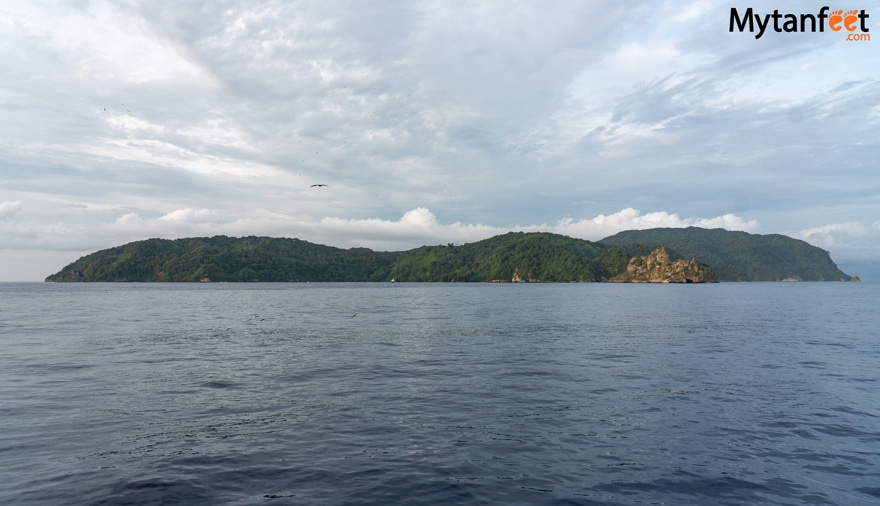
Cocos Island National Park Location
550 kilometers (~340 miles) southwest off the Pacific coast of Costa Rica.
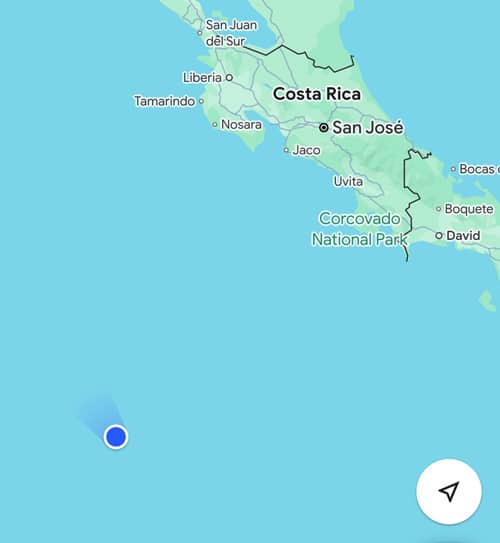
Boats only depart from the Puntarenas port.
The boat ride from Puntarenas to Cocos Island takes around 36 hours. Coming back usually takes a little bit less time, around 30-33 hours depending on conditions.
Cocos Island National Park History
Cocos Island has some of the most fascinating history of all the places in Costa Rica, said to go back all the way to prehispanic times! Which is incredible, considering to its isolated location far off in the ocean.
Formally, the first official maps of Cocos Island, Costa Rica were created by a French explorer in 1541.
- 1869: Costa Rica officially claims sovereignty over Cocos Island.
- 1978: Cocos Island becomes a national park.
- 1987: Jacques Costeau visits the island, claiming it as the most beautiful island in the world.
- 1989-1990: Recreational dive operators begin operating diving trips.
- 1992: National park rangers station themselves at the island permanently.
- 1997: Cocos Island became a UNESCO World Heritage Site, one of four in Costa Rica.
Unlike what many think, Jurassic Park was not filmed on Cocos Island. The directors did base Isla Nubar off of Cocos Island however, and showed it in the opening sequence.
Though dinosaurs were not part of Cocos Island’s history, pirates and buccaneers certainly were!
Cocos Island’s Pirates and Treasure
Various explorers, adventurers and pirates journeyed to the island during the 16th, 17th and 18th centuries. Pirates especially liked Cocos Island, as it has an abundance of freshwater.
During these stop overs and visits, many of them buried their treasure in its thick jungles and crashing shores.
The most famous treasure, the Treasure of Lima, was supposedly buried on Cocos Island in 1821. This treasure has an estimated worth of up to $1 billion USD in today’s time!
Many hopeful treasure hunters have visited the island over the years, attempting multiple times to strike rich, but without success (that we know of).
Though treasure hunting was the main purpose for many visitors to the island, it is currently illegal. That means that these riches may still be buried on the island!
How to Visit Cocos Island National Park
Although Cocos Island National Park is open to the general public, it is not an easily accessible place to visit.
Due to the island’s remote location, the only way to get to Cocos Island is via a 36 hour boat ride, departing from the port of Puntarenas. There are no airports/airstrips or any other way to get to the island.
Furthermore, there are no services on the island except for a few ranger stations, their lodging quarters and an emergency station. No hotels, no hospitals, no supermarket, nothing.
As the national park wants to keep Cocos Island National Park as pristine, untouched and undisturbed as possible, they have implemented extremely strict visitation protocols.
For this reason, the majority of visitors are experienced scuba divers, as the diving is the main attraction. They book a multi-day liveaboard expedition to explore Isla del Coco’s magical underwater world.
Cocos Island Liveaboards for Scuba Divers
There are two private dive operators that run Cocos Island liveaboards for scuba diving expeditions: Aggressor Adventures and Undersea Hunter.
Both operators run 1-2 trips per month to Cocos Island National Park year round, usually 8 or 11 day expeditions. They both have two boats for Cocos Island liveaboard expeditions.
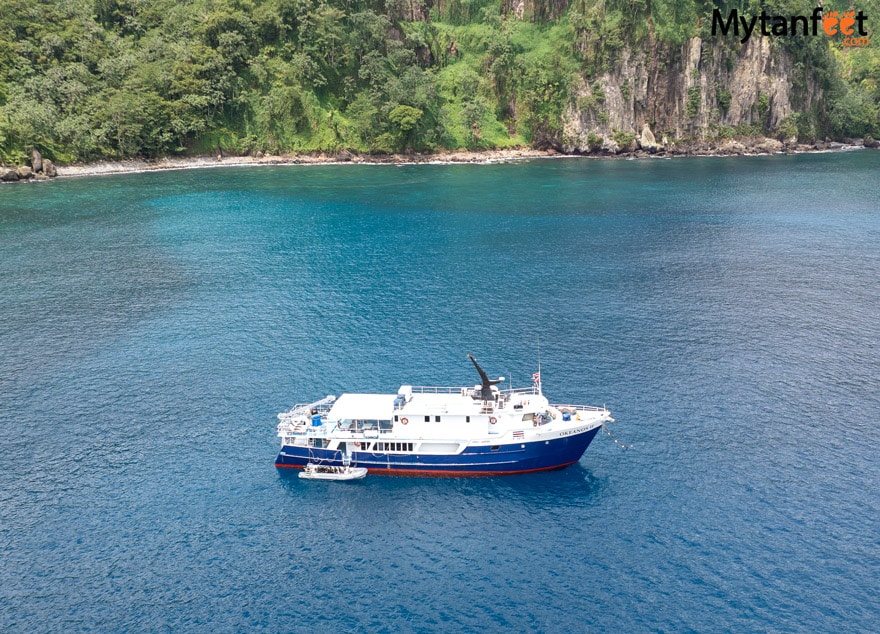
Each expedition includes lodging on the boat, meals, bilingual guides, divemasters, equipment, and 3 dives per day.
A Cocos Island liveaboard trip cost ranges anywhere between $5-8,000 USD per person, depending on the length of the trip and type of room.
Trip costs do not include items such as dive equipment rental, national park fees, flights and tips.
Cocos Island is the best place in Costa Rica for scuba diving, however it is not for beginners. Divers must be advanced level to join, as the dive sites are technical with strong currents.
Non Scuba Diving Visitors
For the non-scuba divers, there is not really any other way to visit Cocos Island.
However, in recent years, the national park has begun allowing a very limited number of visitors to go onto to the island and do activities on land.
The majority of these trips have some sort of research focus, led by a certified guide.
This is how we visited Cocos Island National Park, by signing up for an 11 day birding and nature expedition, led by a Costa Rican professor.
Not only we did enjoy Cocos Island, but we also assisted in bird research.
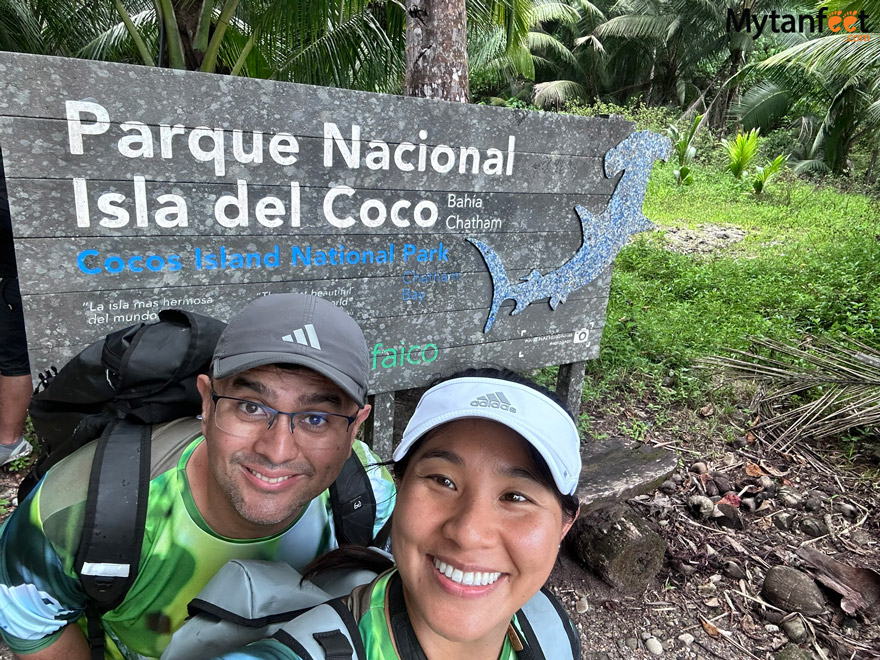
These trips are led by certified guides who negotiate with the liveaboard company to book a certain number of spots on the boat to share with scuba divers.
These trips do not include scuba diving and instead, allow visitors onto the island to hike, boat around the island, go birdwatching and see the waterfalls.
Interested in joining the same expedition we went on? Contact us and we’ll be happy to help!
Private Charter
If you have your own boat or charter your own boat and crew, you can sail there on your own.
You must apply for national park permits beforehand to be allowed to the island. Without appropriate national park permits, they will not allow you to stay.
Cocos Island Scuba Diving – Why It’s One of the Best in the World
Thanks to Cocos Island’s protected status as a national park and as part of the Bicentennial Marine Management Area, the scuba diving is one of the best in the world.
These protected waters are home to some of the most bio-diverse marine life on the planet, with 16 marine mammals, more than 4 kinds of rays, 4 species of turtles, over 350 kinds of saltwater fish, 120+ species of echinoderms, and at least 45 coral species.
Most notable of all though, is the sharks. Cocos Island, loosely known as shark paradise, definitely lives up to its name with 12 species of sharks!
Furthermore, none of the wildlife is manipulated by man. No feeding, no touching. Scuba divers get to witness 100% raw, wild and organic animal behavior.
Though the Treasure of Lima, among countless other riches have never been officially discovered, the true treasure of Cocos Island is its nature and intense biodiversity.
Dive Sites
With nearly 20 different dive sites around Cocos Island, ranging from 25-43 meters in depth, divers have plenty of opportunities to see large pelagics like sharks, whale sharks, dolphins and giant manta rays.
The more popular dive sites for the sharks are Alcyone, Manuelita Channel, Manuelita Outside, and Big and Small Dos Amigos.
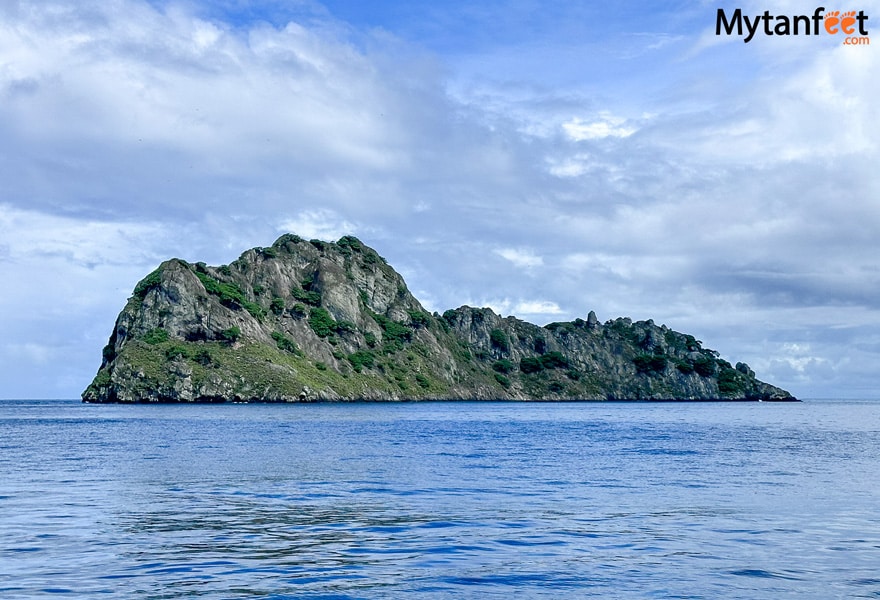
Manuelita Channel is known for its tiger shark population.
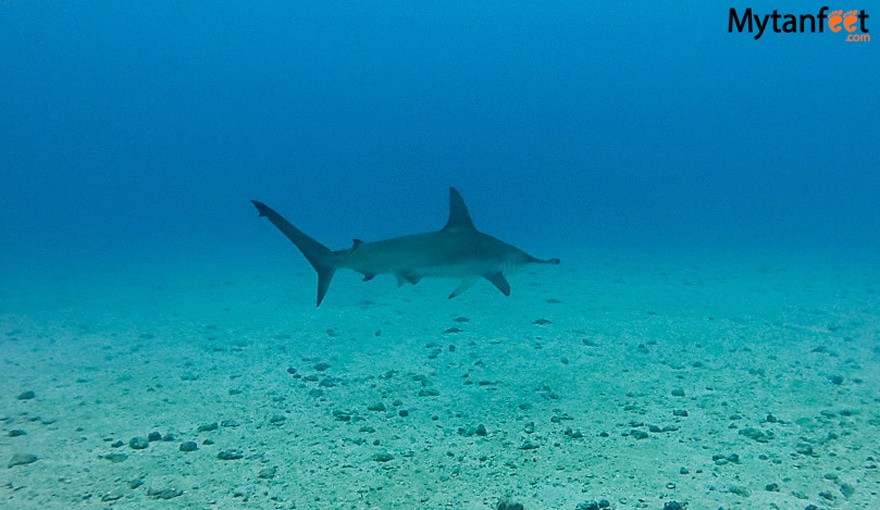
Divers enter the water everyday in hopes of witnessing huge groups of scalloped hammheads quietly making their way to the cleaning stations.

Other marine life to see are eagle rays, Harlequin shrimp, endemic Rosy lipped bat fish, eels, jacks, tuna, sea stars, sea urchins, frog fish, octupus, triggerfish, flounders, snake eels, garden eels, mantis shrimp, lobsters and much more.
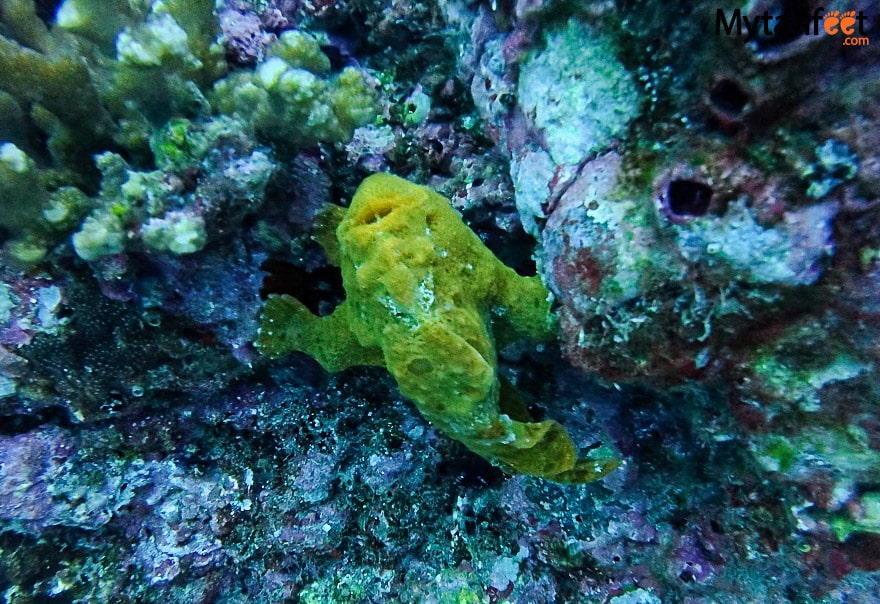

Divers may also encounter bait balls, and witness the frenzy of dolphins and sharks hunting jacks and schooling fish.
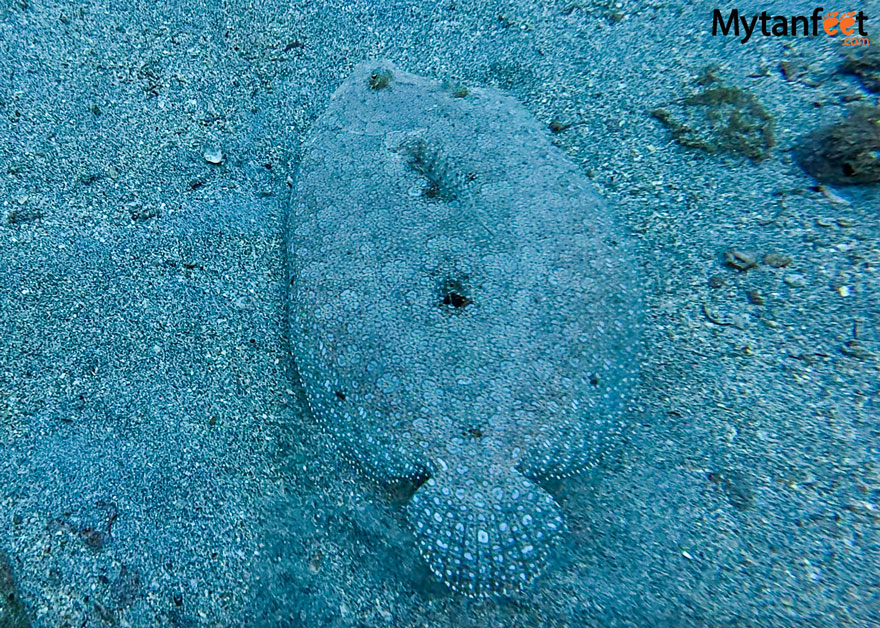
What to Do on Cocos Island, Costa Rica on Land
Although the scuba diving takes the spotlight for what Cocos Island National Park is known for, topside has plenty of interesting things to do as well.
There are two sectors that visitors can go to: Wafer and Chatham. Both of these bays have sandy beaches with hiking trails. The liveaboard boats dock at either one of these bays depending on conditions.
To be allowed on the island, visitors must request permission every day before arrival. Visitors can only be allowed on the island accompanied by either their guide, a crew member or a park ranger.
Chatham Bay
Chatham Bay was the main bay where the boats anchored during the Age of Exploration. Many legends of treasure start and end there, including the mysterious Treasure of Lima.
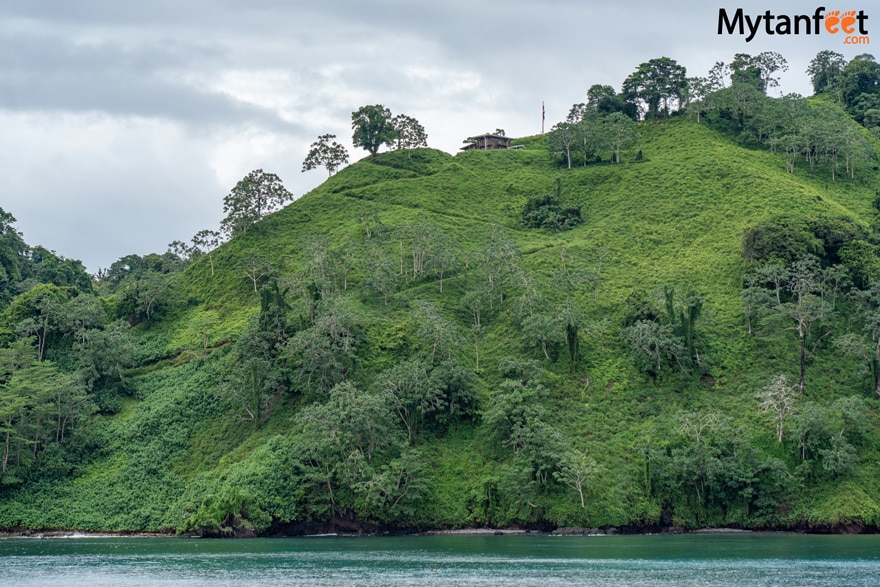
Another famous treasure in the island’s history is from Benito “Bloody Sword” Bonito, who supposedly buried hundreds of gold ingots, gold hilted swords and many other jewels in Chatham Bay.
Mirador Aguacate and Bahia Trail
Nowadays, Chatham Bay offers hiking instead of treasure hunting. There is one main hiking trail from the beach, the Bahia Trail.
It first goes up to a view point called Mirador Aguacate and the old ranger station.
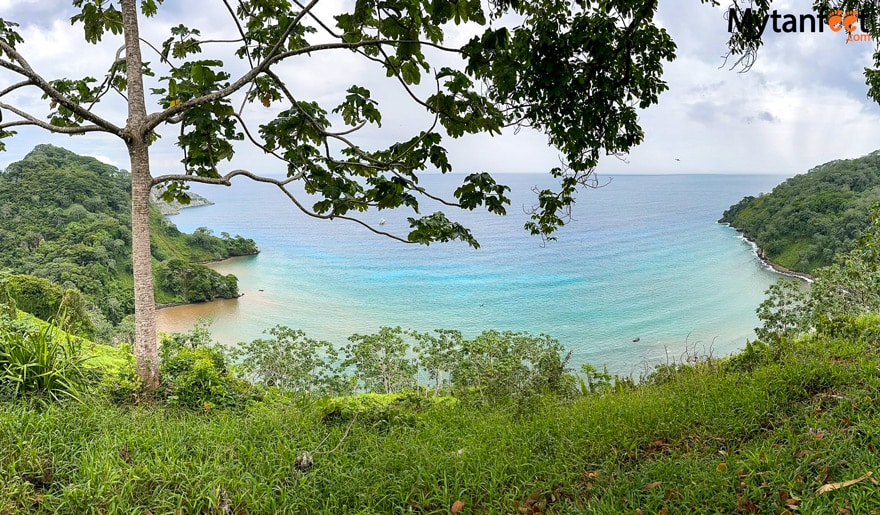
From the ranger station, the trail continues to Chatham Bay. This trail is around 3 kilometers (1.86 miles).
The Bahia Trail offers unbeatable views of both Chatham and Wafer Bay, as well as great opportunities to see White Terns, Frigates and other marine birds.
Jacques Coustea Rock
On the beach, there are a lot of carved rocks from people who have landed on Cocos Island over the years.
The most notable one being Jacques Coustea when he visited Cocos Island in 1987.

Amongst the many rocks, are also leftover pieces of old gold mining equipment.
They say that even some pirates and bucaneers inscribed directions or hints to their buried treasure on the rocks!
Wafer Bay
Wafer Bay is the main sector of Cocos Island National Park. This is where the ranger stations, ranger housing and emergency station are.
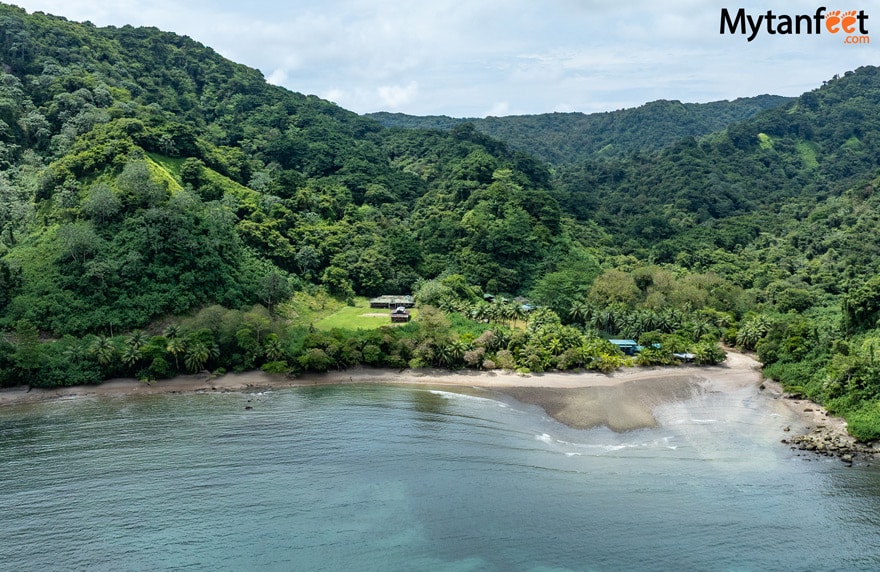
There are many things to do at Wafer Bay.
Cerro Iglesias
The highest point on Cocos Island at 575 meters/1900 feet can be reached via an arduous ~11 kilometer (6.8 miles) round trip hike.
Trails are often muddy and slippery while climbing rapidly in elevation. Hikers must be in very good physical condition with appropriate gear.
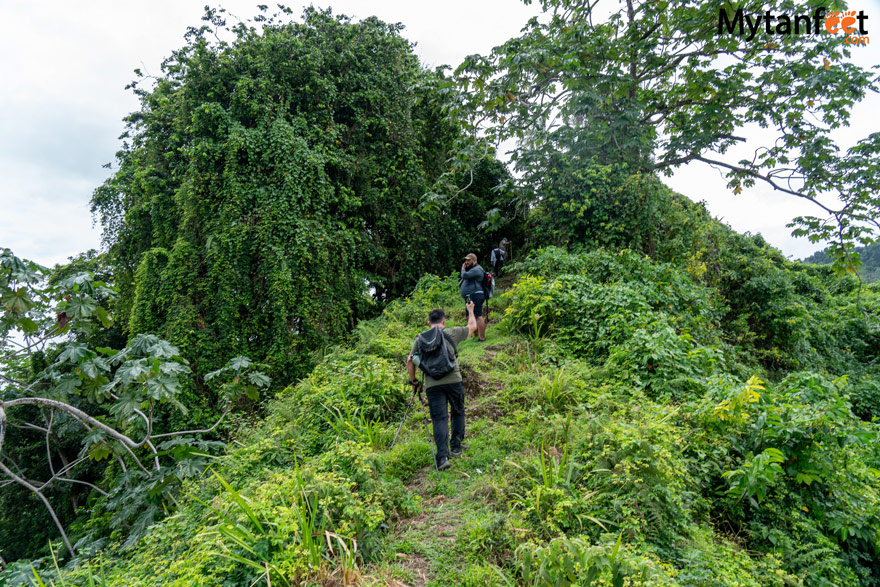
This hike not only takes you to the island’s highest point, but through Cocos Island’s tropical cloud forest, the lowest hanging in the world at only 450 meters or 1476 feet!

This cloud forest is dominated by the endemic palo de hierro tree, Sacoglottis holdridgei.
Gissler Caves
August Gissler, a German treasure hunter first visited Cocos Island in 1889, in hopes of finding the Treasure of Lima. He even created an agricultural colony, in accordance with the Costa Rican government during his time on the island.
Though to no avail during the 17 years of his life dedicated to treasure hunting, August Gissler left many marks on the island.
Visitors can still see his determined attempts, such as the three Gissler Caves.
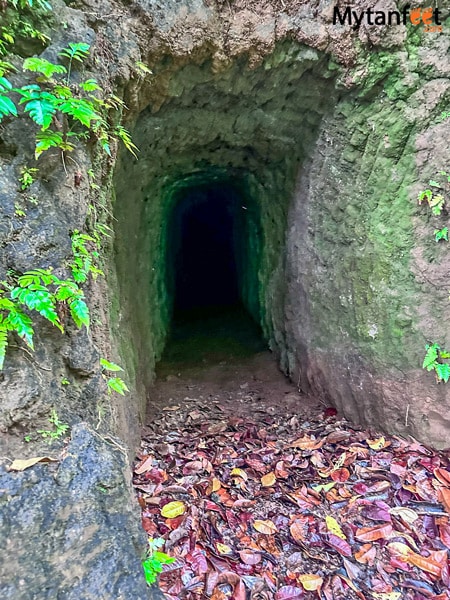
Careful if you go inside. The few insects of Cocos Island really likes the caves. Also, this cave ends at a drop off, as Gissler then dug a big hole to connect this cave to the one below.
Bahia Trail
This trail connects Chatham and Wafer Bay. Same trail mentioned in the Chatham Bay section.

From Wafer, there are a couple of viewpoints, the most notable Mirador Lionel Wafer, named after one of Cocos Island’s explorers.
El Puente Copey
Illegal fishing has plagued Isla del Coco’s waters for many years, thankfully less now in recent years than before.

To signify the destruction illegal fishing leaves behind, the Copey bridge is constructed entirely out of illegal fishing nets and materials.
To begin the Cerro Iglesias hike, you must cross this bridge.
Catarata Wafer/Catarata Escondida
Though not accessible via the Wafer station, Catarata Wafer lies just right around the corner. The skiff will drop you off close to the beach so you have to swim to shore and hike upstream to the waterfall pool.
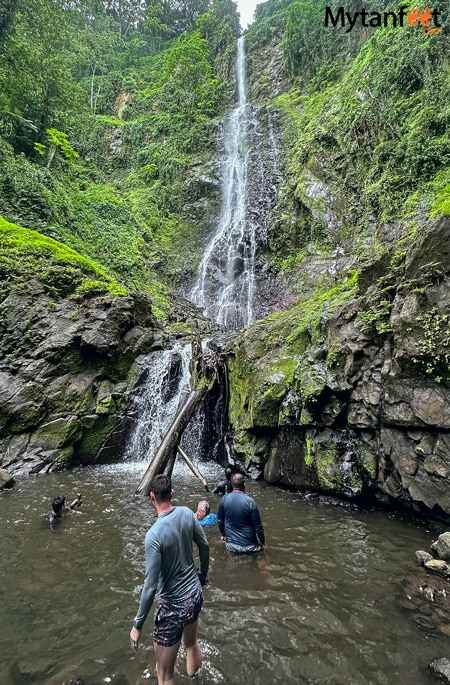
The refreshing pool is not only a fun place to cool down, but it is also home to the endemic Cocos Blue-Banded Goby fish. These fish have suckers on the bottom which allows them to stick to the pools.
Thanks to the incredible amount of rain Cocos Island receives (190-240 inches of rain/182-609 cm) per year, there is no shortage of freshwater.

Cascading waterfalls can be seen from every corner of the island.
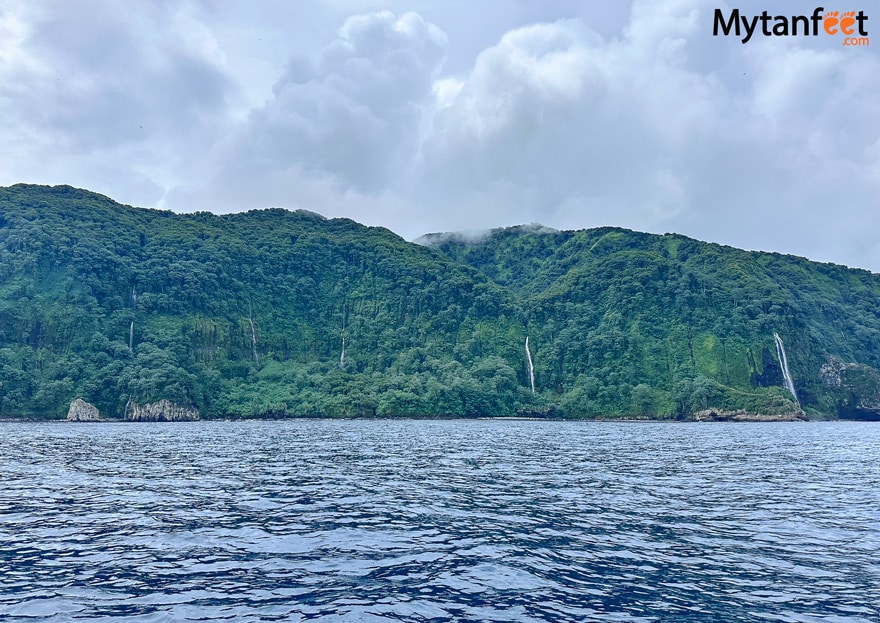
When it rains, it pours on Cocos Island. During those cloudy rainy days, the island emits a more mysterious aura but its natural beauty persists through the gloom.
Endemic Species of Cocos Island, Costa Rica
As an oceanic island, there is a great amount of endemic species on Cocos Island.
There are three endemic birds, 27 endemic saltwater fish, three endemic freshwater fish, seven endemic beetles, seven endemic spiders, two endemic reptiles and one endemic scorpion.
There are even two endemic mosquitoes.
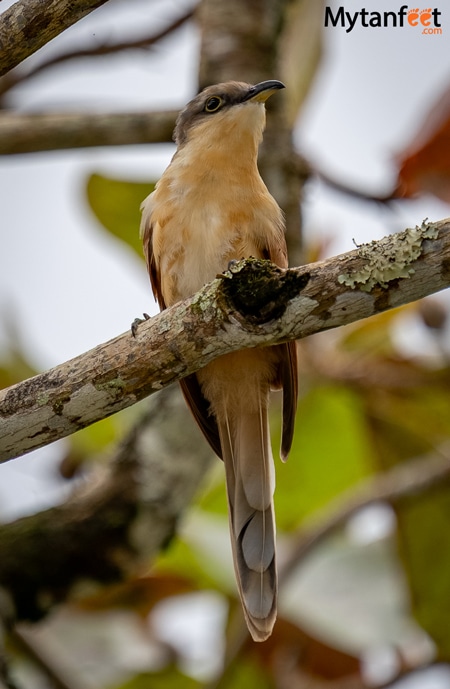

The third endemic bird of Cocos Island is the Cocos Island warbler.
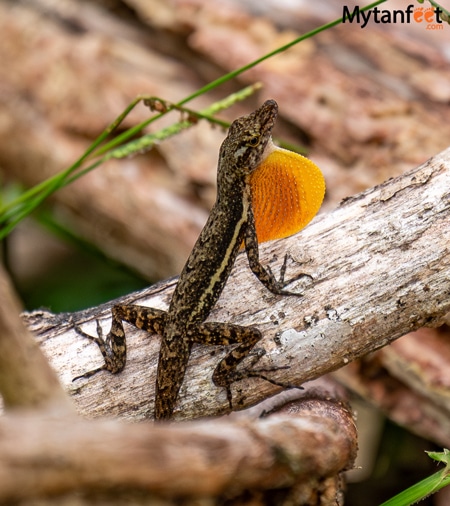
Some birds we saw are Red footed boobys, Galapagos shearwater, Wedge tailed Shearwater, Cocos Booby, Masked Booby, Magnificent Frigatebird, Great Frigatebird, Nazca Booby, Sooty Tern, Black tern, Brown Noddy, Upland Sandpiper, Spotted Sandpiper, Wandering Tattler, Greater Yellowlegs, Lesser Yellow legs, Western Sandpiper, Osprey and Bobolink.

Want to Visit Cocos Island National Park?
For the non-scuba diver, you can try to join one of the research and nature expeditions. These are not run often however, and usually are run Costa Rican private guides who only have one expedition per year due to the high cost and extreme nature of these trips.
As for our trip, we went with Aggressor Adventures, on the Okeanos Aggress II boat, sharing it with scuba divers.
Normally, there are 20 guests on the boats for scuba diving, so our boat was 10 scuba divers and 10 non scuba divers.
Our guide created the itinerary for us, but it was subject to change as the park rangers determined what activities we were allowed to do on the island for the day.
They ended up making a few changes, as we received heavy rains the last few days of our trip.
We did lots of hikes, boat ride around the island, photo sessions and birdwatching.
If you’d like to join a similar trip we did, contact us and we’ll be happy to help!
Watch our full Youtube video to see exactly what our trip to Cocos Island National Park was like!
What to Know about Visiting Cocos Island
Please note that due to the strict Cocos Island National Park protocols, visitors cannot go off on their own. They cannot go to the island on their own or leave their group while they are on land.
You cannot choose what activities you want to do either. Your guide will inform you what the schedule for the day is either at dinner or at breakfast, once they receive the OK from the park rangers.
Snorkeling, swimming, kayaking and night dives are not permitted at the national park.
Best Time to Book a Liveaboard to Cocos Island National Park
If you’re a scuba diver, both Aggressor Adventures and Undersea Hunter run 1-2 liveaboard trips per month, year round. Both are excellent.

For lesser experienced divers or liveaboard first timers, the dry season is generally the better time to go, as it has better weather conditions.
These would be the months of January through April. The journey to the island tends to have gentler waves.
We went mid April and had a very smooth journey to the island, as well as fantastic weather the first three days. The last three days had heavy on and off rains.
I did get quite seasick on the journey there, as it was my first liveaboard and I’ve never been out in open ocean like that. Thank goodness I brought tons of anti-nausea medicine and ginger candies!
Due to Cocos Island location in the Inter-Tropical Convergence Zone with meeting north and south trade winds, there can be rain any time of the year.
It’s much wetter May through December and the 36 hour boat ride there can be quite rocky and or stormy.
Though sharks can be seen year round, the best time to see lots of sharks is July, August and September. Descend, hook yourself onto a rock and enjoy the shark show!
Costa Rica Vacation Checklist
- First time to Costa Rica? Read our First Time in Costa Rica guide.
- Not sure how to move around Costa Rica? Read our How to Get Around Costa Rica guide to find the best transportation method for you.
- Click the link to get our detailed Costa Rica Packing List so you know what essential items to bring.
- Check our Costa Rica destinations map and Costa Rica restaurant map
- Do not forget to purchase Travel Insurance for your trip to Costa Rica.
- Stay connected by purchasing a prepaid SIM Card in Costa Rica.
- Save money with Mytanfeet Deals for tours and hotels and our Costa Rica Car Rental Discount.

Leave a Reply